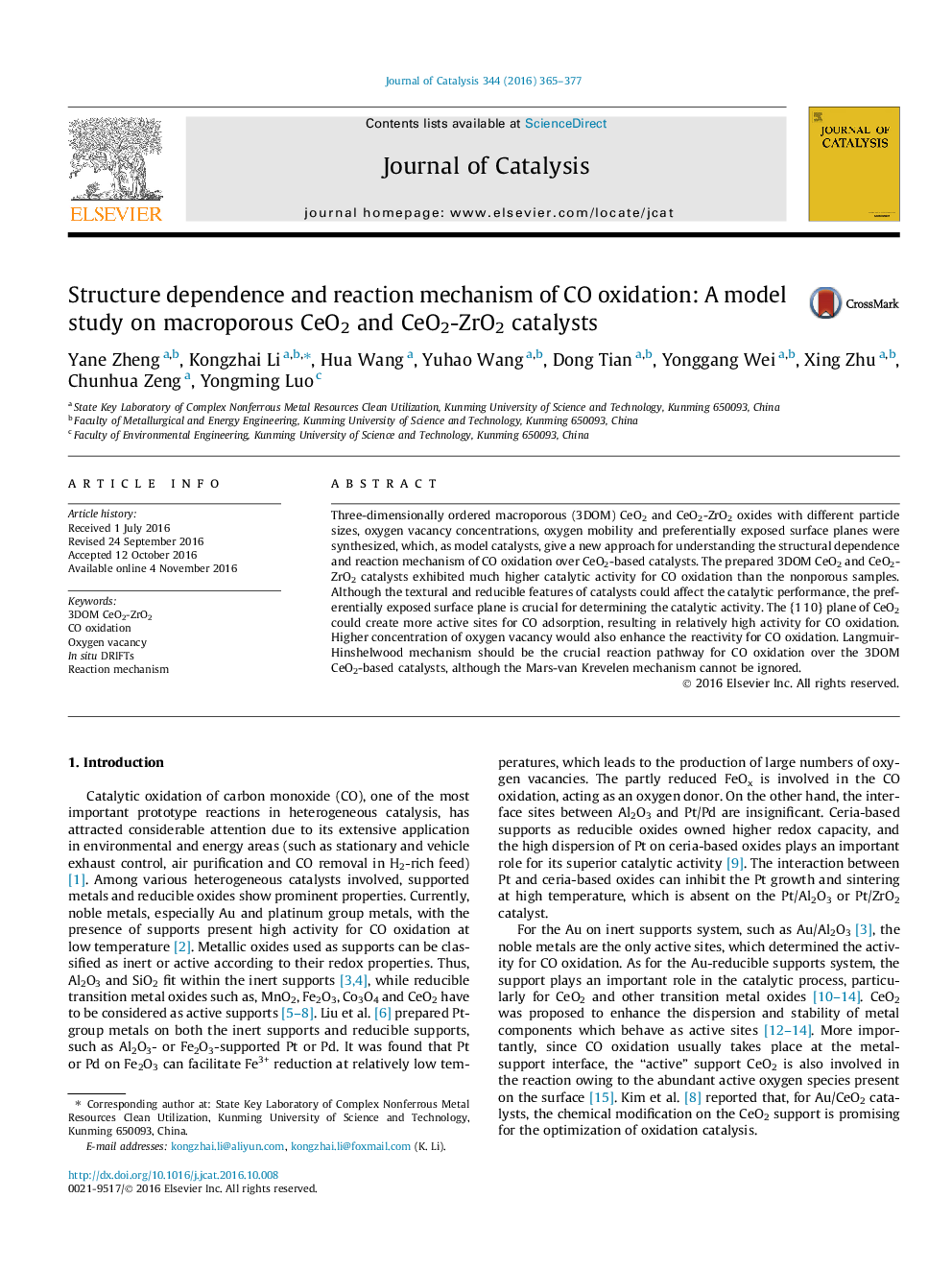| Article ID | Journal | Published Year | Pages | File Type |
|---|---|---|---|---|
| 6455829 | Journal of Catalysis | 2016 | 13 Pages |
â¢3DOM catalysts exhibited much higher catalytic activity for CO oxidation than the nonporous samples.â¢The preferentially exposed surface plane and oxygen vacancy concentration are crucial for determining the catalytic activity.â¢The reaction pathway of CO oxidation is closely related to the oxygen vacancy concentration and low concentration of oxygen vacancy would result in the buildup of carbonate species.
Three-dimensionally ordered macroporous (3DOM) CeO2 and CeO2-ZrO2 oxides with different particle sizes, oxygen vacancy concentrations, oxygen mobility and preferentially exposed surface planes were synthesized, which, as model catalysts, give a new approach for understanding the structural dependence and reaction mechanism of CO oxidation over CeO2-based catalysts. The prepared 3DOM CeO2 and CeO2-ZrO2 catalysts exhibited much higher catalytic activity for CO oxidation than the nonporous samples. Although the textural and reducible features of catalysts could affect the catalytic performance, the preferentially exposed surface plane is crucial for determining the catalytic activity. The {1Â 1Â 0} plane of CeO2 could create more active sites for CO adsorption, resulting in relatively high activity for CO oxidation. Higher concentration of oxygen vacancy would also enhance the reactivity for CO oxidation. Langmuir-Hinshelwood mechanism should be the crucial reaction pathway for CO oxidation over the 3DOM CeO2-based catalysts, although the Mars-van Krevelen mechanism cannot be ignored.
Graphical abstractDownload high-res image (130KB)Download full-size image
